Hairy people
Sicilian artist Valerio Carrubba takes portraits and modifies them with MOAR HAIR!

(thx, david)



This site is made possible by member support. 💞
Big thanks to Arcustech for hosting the site and offering amazing tech support.
When you buy through links on kottke.org, I may earn an affiliate commission. Thanks for supporting the site!
kottke.org. home of fine hypertext products since 1998.
Sicilian artist Valerio Carrubba takes portraits and modifies them with MOAR HAIR!

(thx, david)
Billion, by artist Vincent Kohler, shows the different pieces of wood derived from a log. It reminds me of the iconic butchery map showing the different cuts of meat. The sculpture, interestingly, is made out of polystyrene.
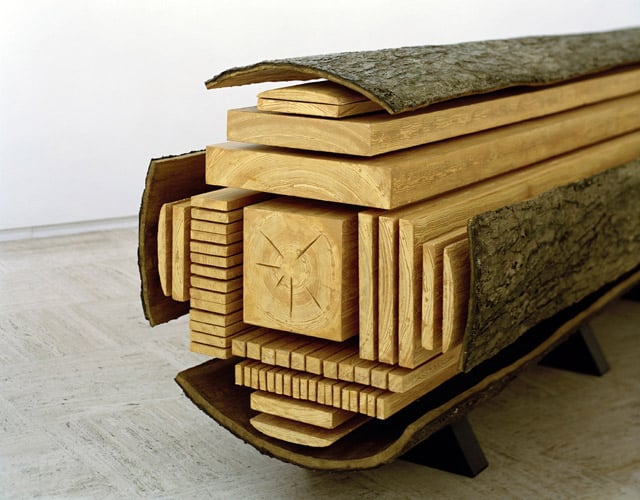
(via dens)
This forgotten Vermeer has been floating around for a few months but I just saw it. Love it:

Anyone know who did this? I spent a few minutes trying to find out but got dead-ended in a Tumblr/Imgur attribution black hole. (via ★ryanvlower)
Update: The creator of the image is supposedly Mitchell Grafton, although I couldn’t find any airtight attribution. (thx, all)
Artists in the UK have created a ‘Rain Room’ inside the Barbican that gives the impression from the outside that it is pouring rain. 3D cameras make it so the rain stops when you walk through it. That is, the rain is everywhere you aren’t, and you don’t get wet at all.
(via ★adamkuban)
Update: Neglected to mention the Rain Room is an installation by rAndom International artists Stuart Wood and Hannes Koch.
A 1958 Mark Rothko painting worth millions of dollars, Black On Maroon, was defaced by graffiti at the Tate Modern on Sunday. The vandalism was some sort of ‘artistic statement’ by a guy with a neck tattoo.
Questions will be asked about security at the gallery, where the Rothkos are not protected by glass and are separated from visitors only be a low-level barrier that can easily be stepped over.
Typically, each room is monitored by a single gallery attendant.
It was Rothko himself who stipulated how his work should be displayed at the Tate.
The defaced painting was one of a series commissioned from Rothko in 1958 for the Four Seasons restaurant in New York’s Seagram Building, but never installed.
In 1969, the artist donated nine of the paintings to the Tate on the proviso that they be displayed “as an immersive environment”. He died the following year.
This is Cedro di Versailles, a sculpture by Giuseppe Penone, carved out of a five-ton cedar log from Versailles.
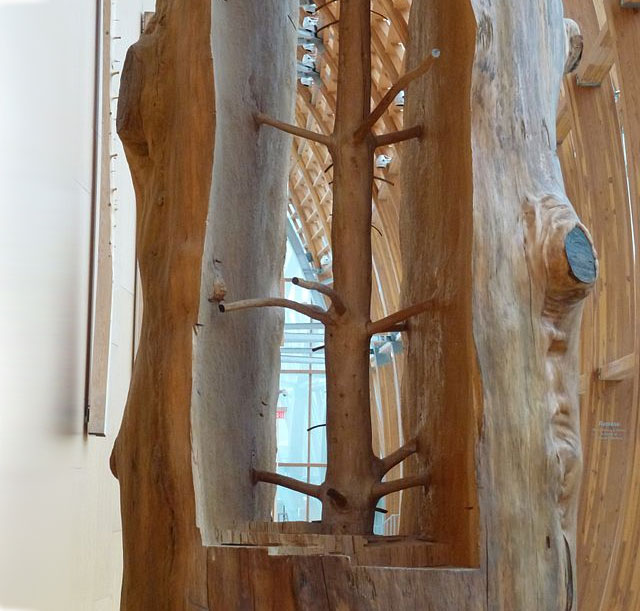
To create the piece, Penone removed the outer rings of the tree to reveal the younger tree within. (via ★spavis)
A 15-foot-tall statue of Zinedine Zidane head-butting Marco Materazzi by sculptor Adel Abdessemed has been placed in the courtyard of the Pompidou Center in Paris.

The statue, entitled “Headbutt,” is by the Algerian sculptor Adel Abdessemed, and coincides with an exhibition of his work in the museum. “This statue goes against the tradition of making statues to honor victories,” said Phillipe Alain Michaud, who directed the exhibition. “It is an ode to defeat… Zidane’s downward glance recalls that of Adam, chased from paradise.”
But as Michaud knows, and surely as Abdessemed intends, it is both not so simple and much simpler. It is an ode to more than defeat; but it’s also a representation of very basic feelings complicated by literary analogy. The Headbutt was full of anger, stupidity, and recklessness, but beneath them lay a damaged sense of honor. This makes it hard for even the calmest football fan to wholly begrudge Zidane his actions.
The Swiss-based Mona Lisa Foundation is presenting an earlier version of the famed Leonardo da Vinci painting. According to one foundation member, “We have investigated this painting from every relevant angle and the accumulated information all points to it being an earlier version of the Giaconda in the Louvre.” Seems like a good excuse to listen to The Rolling Stones sing Mona (I Need You Baby).
Beginning in October, a copy of Edvard Munch’s iconic The Scream of Nature will be on display at MoMA for a six-month stint.
Of the four versions of The Scream made by Munch between 1893 and 1910, this pastel-on-board from 1895 is the only one remaining in private hands. The three other versions are in the collections of museums in Norway. The Scream is being lent by a private collector, and will be on view at MoMA through April 29, 2013.
Archaeologist Marc Azéma thinks that Stone Age artists may have fashioned their cave paintings in such a way as to suggest movement, crude movies that came to life as the flickering light from a fire danced on the walls.
Not only that, Paleolithic artists may have also have invented the thaumatrope thousands of years before the Victorians in the 1800s.
Consisting of a card or disk with different designs on either side, the device demonstrates the persistence of vision: When the card or disk is twirled, the designs appear to blend into one.
Rivère discovered that Paleolithic artists used similar optical toys well in advance of their 19th-century descendants.
The artist examined Magdalenian bone discs — objects found in the Pyrenees, the north of Spain and the Dordogne, which measure about 1.5 inches in diameter.
Often pierced in their center, the discs have been generally interpreted as buttons or pendants.
“Given that some are decorated on both sides with animals shown in different positions, we realized that another type of use, relating to sequential animation, was possible,” the researchers said.
They mentioned one of the most convincing cases, a bone disc found in 1868 in the Dordogne. On one side, the disc features a standing doe or a chamois. On the other side, the animal is lying down.
Azéma and Rivère discovered if a string was threaded through the central hole and then stretched tight to make the disc rotate about its lateral axis, the result was a superimposition of the two pictures on the retina.
Incredible that moviemaking is tens of thousands of years old instead of just a couple hundred.
I can’t find any other information about this online or anywhere else, but tucked away in a fall arts preview in today’s NY Times is the juicy news that MoMA has picked a date for their screening of Christian Marclay’s 24-hour movie, The Clock. The show will open on Dec 21 and run through Jan 21. It sounds like the screening will happen in the contemporary galleries and won’t show continuously except on weekends and New Year’s Eve. Which is lame. Just keep the damn thing running the whole month…get Bloomberg to write a check or something.
Anyway, probably best to check this out on the early side during the holiday season because it’ll turn into a shitshow later on.
Opening on September 15 at Edward Tufte’s gallery in Chelsea is All Possible Photons, an exhibit of sculptures by Tufte of Richard Feynman’s subatomic particle diagrams.
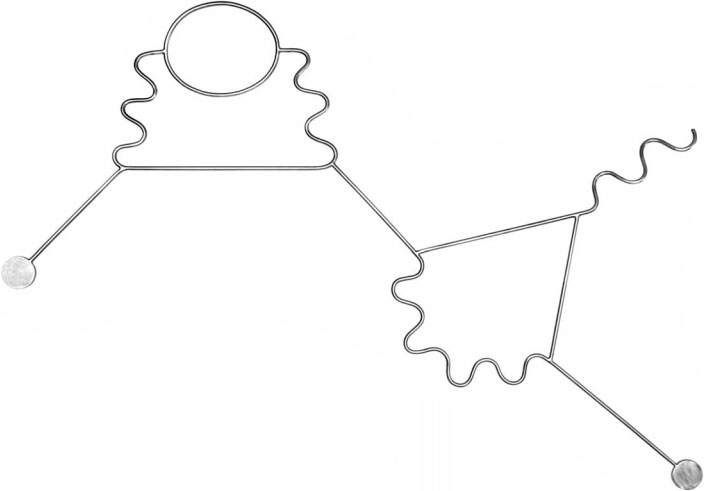
Made from stainless steel and air, the artworks grow out of Richard Feynman’s famous diagrams describing Nature’s subatomic behavior. Feynman diagrams depict the space-time patterns of particles and waves of quantum electrodynamics. These mathematically derived and empirically verified visualizations represent the space-time paths taken by all subatomic particles in the universe.
The resulting conceptual and cognitive art is both beautiful and true. Along with their art, the stainless steel elements of All Possible Photons actually represent something: the precise activities of Nature at her highest resolution.
Artist Bryan Lewis Saunders has been making self-portraits of himself every day since 1995. For one particularly interesting sub-series, Saunders drew himself under the influence of all kinds of different drugs (adderall, coke, meth, huffing lighter fluid, etc.). Here he is on absinthe and mushrooms respectively:

Neat project from Michal Kohút: glasses that turn the lights off whenever the person wearing them blinks.
The lights in the room are temporarily turned off whenever the person wearing the glasses blinks. It all happens so fast that the person wearing the glasses does not even notice the change.
(via @essl)
NYC Sanitation Department employee Nelson Molina has curated a makeshift museum of trash gathered by Molina and other sanitation workers over the past 20 years.
Mr. Molina, 58, a lifelong New Yorker and a sanitation worker since 1981, began collecting pictures and trinkets along his route about 20 years ago, he said, to brighten up his corner of the garage locker room. Gradually, his colleagues on East 99th Street began to contribute, gathering up discarded gems they thought he might enjoy. As the collection grew, word spread, and workers from other boroughs started to drop off contributions from time to time. Next, building superintendents along Mr. Molina’s route started putting things aside they thought he could use.
Today, he estimates he has close to 1,000 pieces in his collection, arranged with great thoughtfulness, and even humor, in an enormous open room against cream-colored brick. (He painted the walls, mixing together beige, ivory, white and every other light-colored paint he and his colleagues could find, he explained, so that the pictures would pop.)
For the next two weeks, Christian Marclay’s 24-hour supercut of clocks from movies will be on display at Lincoln Center. The Clock shows Tue-Thu from 8am to 10pm and continuously over the weekend.
The Clock is a spectacular and hypnotic 24-hour work of video art by renowned artist Christian Marclay. Marclay has brought together thousands of clips from the entire history of cinema, from silent films to the present, each featuring an exact time on a clock, on a watch, or in dialogue. The resulting collage tells the accurate time at any given moment, making it both a work of art and literally a working timepiece: a cinematic memento mori.
Admission is free, the space air-conditioned, and the couches only slightly uncomfortable. Seating capacity is 96, so the venue is posting updates on Twitter about how long the line is. I popped in earlier today expecting to wait 20 minutes or more and walked right in…quicker than the Shake Shack. I think the MoMA is supposed to be showing it in the next year or two and that is sure to be a complete mob scene so this is your chance to check it out with relative ease.
Earlier this year, Daniel Zalewski profiled Marclay for the New Yorker about how the artist created the film.
Marclay had a dangerous thought: “Wow, wouldn’t it be great to find clips with clocks for every minute of all twenty-four hours?” Marclay has an algorithmic mind, and, as with Sol LeWitt’s work, many of his best pieces have originated with a conceit as straightfoward as a recipe. The resulting collage, he realized, would be weirdly functional; the fragments, properly synched, would tell the time as well as a Rolex. And, because he’d be poaching from a vast number of films, the result would offer an unorthodox anthology of cinema.
There were darker resonances, too. People went to the movies to lose track of time; this video would pound viewers with an awareness of how long they’d been languishing in the dark. It would evoke the laziest of modern pleasures-channel surfing-except that the time wasted would be painfully underlined.
This is a five-minute video of Andy Warhol eating a Burger King hamburger accompanied by Heinz ketchup.
The scene is part of a film done by Jorgen Leth called 66 scenes from america.
Leth had his assistant buy some burgers and directly advised him to buy some in halfway neutral packaging as Leth was afraid that Warhol might reject some brands (Warhol always had an obsession with some of his favorite brands).
So Andy Warhol finally did arrive at the studio, of course along with his bodyguards, and when he saw the selection of burgers the assistant had brought he asked “Where is the McDonald’s?” and Leth — slightly in panic — was immediately like “I thought you would maybe not like to identify…” and Warhol answered “no that is the most beautiful”. Leth offered to let his assistant quickly run to McDonald’s but Warhol refused like “No, never mind, I will take the Burger King.”
(via bon appetit)
I love McLean Fahnestock’s series of modified photos of rocket launches without the rockets:

Fahnestock also did the video of all 135 Space Shuttle launches at once.
Artist Angelica Dass pairs photographs of people with the Pantone colors of their skin colors.

More of the project can be found on her Tumblr. (via designboom)
In an interview with Nicola Twilley and Geoff Manaugh, photographer Edward Burtynsky talks about his use of film and drones, his current big project photographing water, and the challenges of finding ways to photograph the ubiquitous.
I’d say, actually, that I’ve been careful not to frame the work in an activist or political kind of way. That would be too restrictive in terms of how the work can be used in society and how it can be interpreted. I see the work as being a bit like a Rorschach test. If you see an oil field and you see industrial heroism, then perhaps you’re some kind of entrepreneur in the oil business and you’re thinking, “That’s great! That’s money being made there!” But, if you’re somebody from Greenpeace or whatever, you’re going to see it very differently. Humans can really reveal themselves through what they choose to see as the most important or meaningful detail in an image.
Burtynsky is a favorite around these parts.
This story involve: ninjas, Orange County, and SpongeBob SquarePants. Depending on who you ask, artist Todd White, lead character designer of SpongeBob SquarePants, either hired a gang of ninjas to hold hostage a gallery owner for several hours while they stole all his work from the gallery or sent his manager, his lawyer, and an off duty LAPD officer to take his art back from a gallery owner who fraudulently reproduced and signed his work.
Claiming that she had been assaulted and imprisoned, Howell told the cops that she only agreed to be recorded by the men because she was scared. “She was extremely afraid for her life,” the officer noted. Terrified for her safety, according to the report she gave the police, she told Eddy and the others what they wanted to hear and signed the settlement only because she had been coerced. She suspected that the caper was designed to eliminate her from White’s life and allow him — and Lavoie, who now worked as White’s office manager — to take over her lucrative gallery themselves. Later that month, she filed a lawsuit against White seeking $7.5 million for physical and emotional trauma. The settlement she had signed that night had no merit as far as she was concerned, and she would continue her business at the Hyatt as normal.
And to round out the art theft beat, a Salvador Dali drawing was stolen out of a NYC gallery in broad daylight last week.
The man who stole a drawing by the Surrealist painter Salvador Dalí on Tuesday wore only the most basic of disguises: that of an everyday gallery visitor, walking past the Jeff Koons and Damien Hirst works on display. And he brought only the most basic of tools for his heist: a black shopping bag.
What a wascally wabbit.
Update:
The drawing mentioned above has been returned.
Artist Jason Freeny is making these neat anatomical sculptures of Lego people.

You can see more of his work in progress on his Facebook page. Reminds me of Michael Paulus’ work. (via colossal)
Swedish artist Anders Ramsell has recreated about twelve minutes of Blade Runner using 3285 different watercolor paintings. Wow.
See also Stamen’s watercolor maps. (via ★thefoxisblack)
Turns out that video of people in front of really powerful fans is better than just photos.
(via laughing squid)
I’ve seen a lot of art and sculpture made out of books but the detail and texture of these sculptures by Guy Laramee really sets them apart.
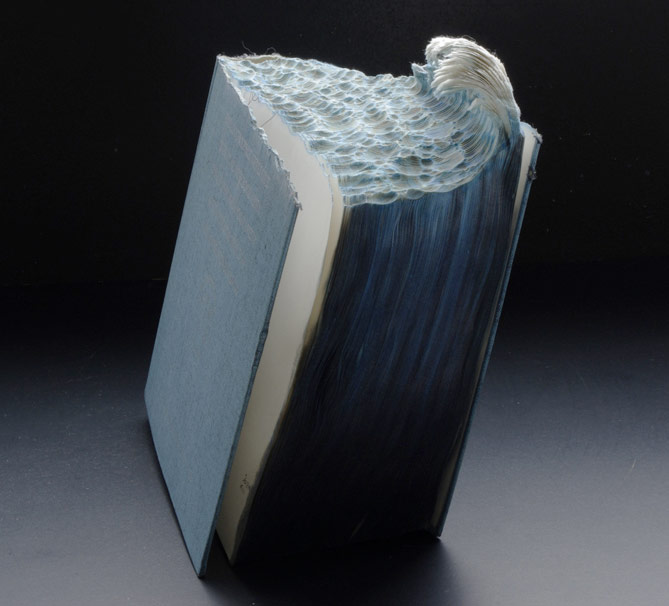
(via colossal)
Just got a note from Alexa Meade, whose work I featured on kottke.org two years ago. Since then, she’s been around the world working on her art; she’ll soon be in DC for an event at the National Portrait Gallery. I thought it would be fun to circle back and look at some of her work from the past two years.

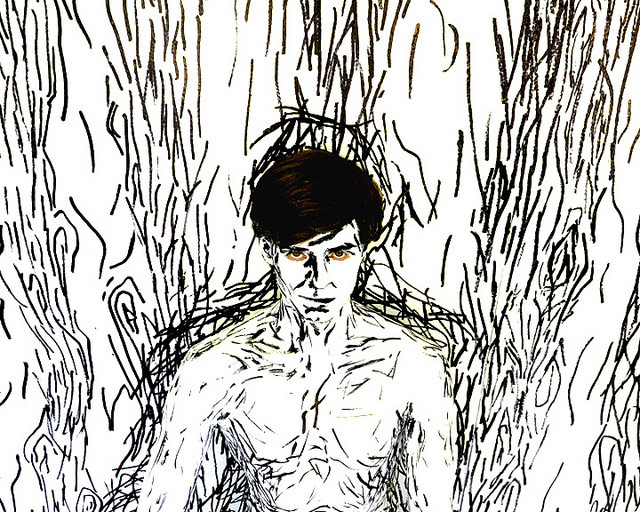
Keep in mind that these are photographs of real people painted to look like paintings. In some ways, it’s more like sculpture than painting. This is Meade standing next to one of her subjects/objects:

You can see more of her work on her site or at Flickr.
Dr. Sergio Cittolin has worked at CERN for the past 30 years as a research physicist. He has also made several drawings of the Large Hadron Collider in the style of Leonardo da Vinci.
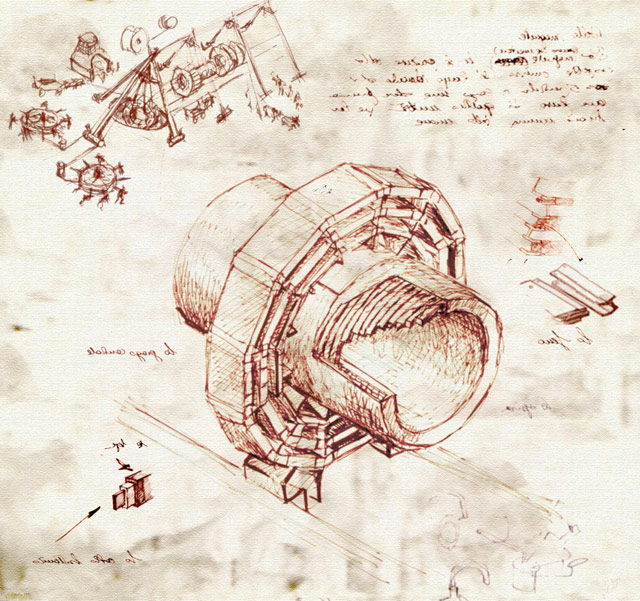

Symmetry magazine profiled Cittolin a few years ago.
As a naturalist, da Vinci probed, prodded, and tested his way to a deeper understanding of how organisms work and why, often dissecting his object of study with this aim. “I thought, why not present the idea of data analysis to the world within the naturalist world of Leonardo?” Cittolin says. In the drawing below, the CMS detector is the organism to be opened; the particles passing through it and the tracks they leave behind are organs exposed for further investigation.
Cittolin brings a sense of humor to his work. For example, after betting CMS colleague Ariella Cattai that he could produce a quality drawing for the cover of the CMS tracker technical proposal by a given deadline, he included in the drawing a secret message in mirror-image writing-which was also a favorite of da Vinci’s. The message jokingly demanded a particular reward for his hard work. The completed picture was delivered on time and within a few hours Cattai cleverly spotted and deciphered the message. She promptly presented him with the requested bottle of wine.
(via ★johnpavlus)
Tadao Cern sets people up in front of powerful fans and takes their pictures. Instant fun house:
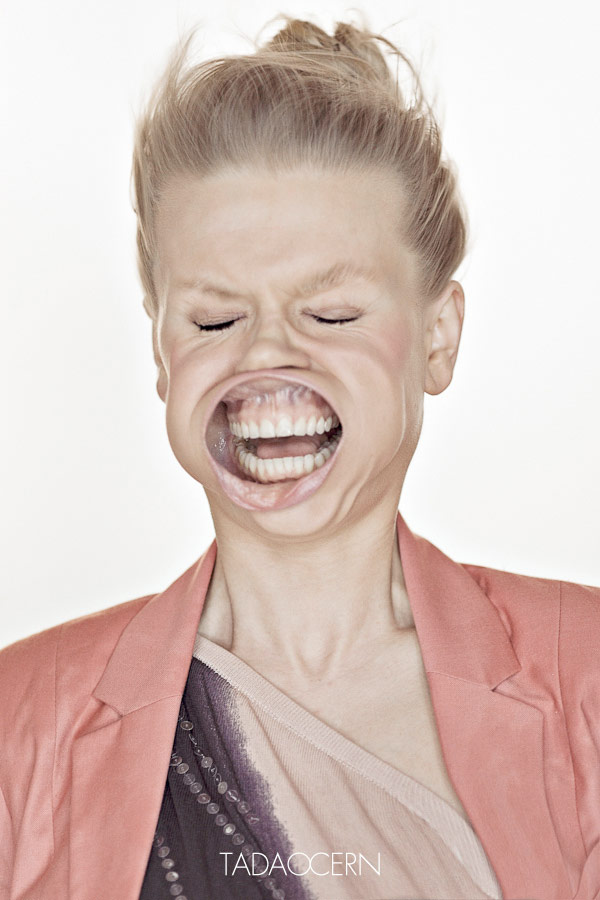
Many more of Cern’s photos are available on Facebook. (via colossal)
Last week, graffiti “artist” Kidult painted the word ART in pink paint all over the Marc Jacobs store in Soho. The store’s staff cleaned it up, but not before snapping a photo of it and dubbing it Art by Art Jacobs. And then, in an awesome twist, Marc Jacobs put the photo on a tshirt and offered it for sale: $689 or $9 less if you want it signed by the “artist”. The Observer’s Foster Kamer has the story.
Jacobs, in this situation, has made one hell of a commentary about the absurd commoditization that some street art has yielded, and how easily ostensibly subversive art can actually be subverted, facile as it so often is, and it may be the best take on the matter since Exit Through The Gift Shop.
I’m going to pay for those quotation marks with lots of email and tweets, aren’t I?
Update: Kidult has answered back with a tshirt of his own that pictures the “artist” tagging the store. $10.
Stay Connected